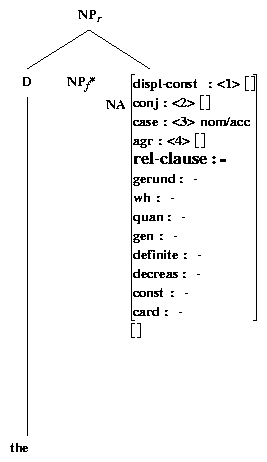
Based on cases like ((258)) and ((259)), which are problematic for the structure in (15.3), the structure in (15.3) is adopted.
As it stands, the RC analysis sketched so far will combine in two ways with the Determiner tree shown in Figure (15.3), 15.6 giving us both the possiblities shown in (15.3) and (15.3). In order to block the structure exemplified in (15.3), the feature rel-clause is used in combination with the following equations.
 |
On the RC:
NPr.b:rel-clause
On the Determiner tree:
NPf.t:rel-clause
Together, these equations block
introduction of the determiner above the relative clause.